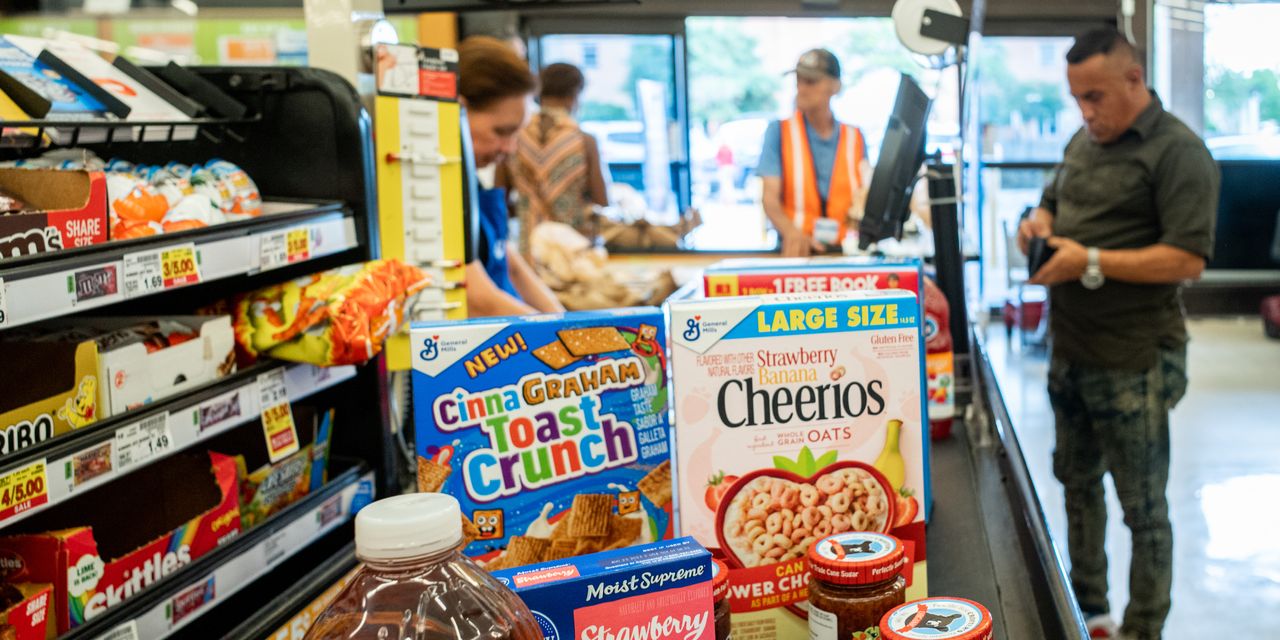Government data showed U.S. gross domestic product increased less than expected in the first quarter, adding to concern that a recession is on the way.
The Bureau of Economic Analysis said Thursday that gross domestic product rose at an annual rate of 1.1.%, falling short of the 1.9% economists surveyed by FactSet had expected. The figure compares with the 2.6% growth reported for the fourth quarter of 2022, but investors don’t expect the news to make the Federal Reserve ease up as it raises interest rates to fight inflation.
The report Thursday also indicated that prices are still rising quickly. The price index for gross domestic purchases increased 3.8% in the first quarter, compared with an increase of 3.6% in the fourth quarter. Excluding food and energy prices, the price index for personal consumption expenditures increased 4.9%, compared with an increase of 4.4% last quarter, the latest sign that the Fed has some way to go in bringing down inflation.
“The slightly cooler than expected GDP report will not prevent the Fed from making another quarter percentage point rate hike at its decision next Wednesday,” Bill Adams, chief economist for Comerica Bank, wrote Thursday. “The Fed wants the economy to run below potential for a while to allow supply and demand to get into better balance.”
The
CME
FedWatch tool shows that interest-rate futures are pointing to odds of 84.4% that Fed will raise interest rates by a quarter point at the next meeting of its policy-setting committee on Tuesday and Wednesday. That compares with 72.2% on Wednesday.
Bond yields jumped. Yields on 2-year Treasury debt, which move in response to expectations for changes in interest rates, rose to 4.039%, an increase from the 3.93% before the data came out. The yield on the 10-year note increased to 3.514% from the 3.46% before the data.
Stocks had risen before the data landed and maintained their gains in morning trading. The
Dow Jones Industrial Average
gained 148 points, or 0.4%, while the
S&P 500
was 0.5% higher. The
Nasdaq Composite
rose 0.9%.
Contributing to the gain in GDP were increases in consumer spending, exports, spending by the federal government, and nonresidential fixed investments, according to the bureau. These increases were partially offset by declines in private inventory investment and residential fixed investment.
The increase in consumer spending isn’t a surprise. Consumer spending was strong at the start of the year, although consistently high inflation and rising interest rates could affect it in quarters to come. Spending on both goods and services increased, led by health care and food services.
“The U.S. economy is likely at an inflection point as consumer spending has softened in recent months,” Jeffrey Roach, chief economist for LPL Financial, wrote Thursday. “The backward nature of the GDP report is possibly misleading for markets as we know consumers were still spending in January but since March, have pulled back as consumers are getting more pessimistic about the future.”
The biggest factor in the slowdown of economic growth was the increase in inventory investment. Inventories grew, adding to GDP but also showing that businesses were struggling to move their products.
The decline in residential fixed investments marks the eighth consecutive quarterly drop. The leading contributor to the decrease in the first quarter was new single-family construction. “New construction of housing units tends to be acutely sensitive to changes in interest rates, so this makes sense given the sizable rise in borrowing costs over the past year,” Mike Reynolds, vice president of investment strategy at Glenmede, wrote Thursday.
The relatively weak GDP number could be a sign that a recession is closer than anticipated. The Federal Reserve has raised interest rates nine times in a bit more than a year as it fights inflation, and experts are concerned that will slow the economy more than it can handle.
“The disappointing 1.1% annualised rise in first-quarter GDP indicates that the economy had less forward momentum at the start of this year than previously thought.,” writes Andrew Hunter, deputy chief U.S. economist at Capital Economics. “We continue to expect the drag from higher interest rates and tightening credit conditions to push the economy into a mild recession soon.”
Concerns have grown that banks will be less eager to make loans following the failures of Silicon Valley Bank and
Signature Bank
in March. The Fed’s April Beige Book, a summary of anecdotal reports on the economy gathered by the regional Federal Reserve banks, said that “several Districts noted that banks tightened lending standards amid increased uncertainty and concerns about liquidity.”
Write to Angela Palumbo at [email protected]
Read the full article here


